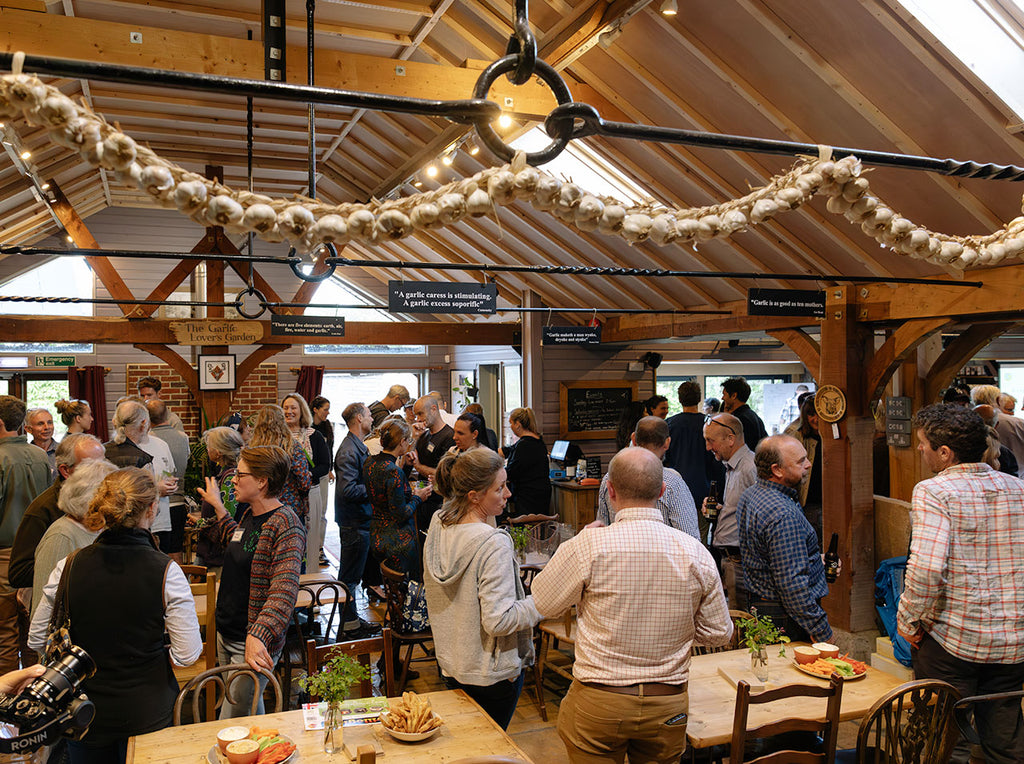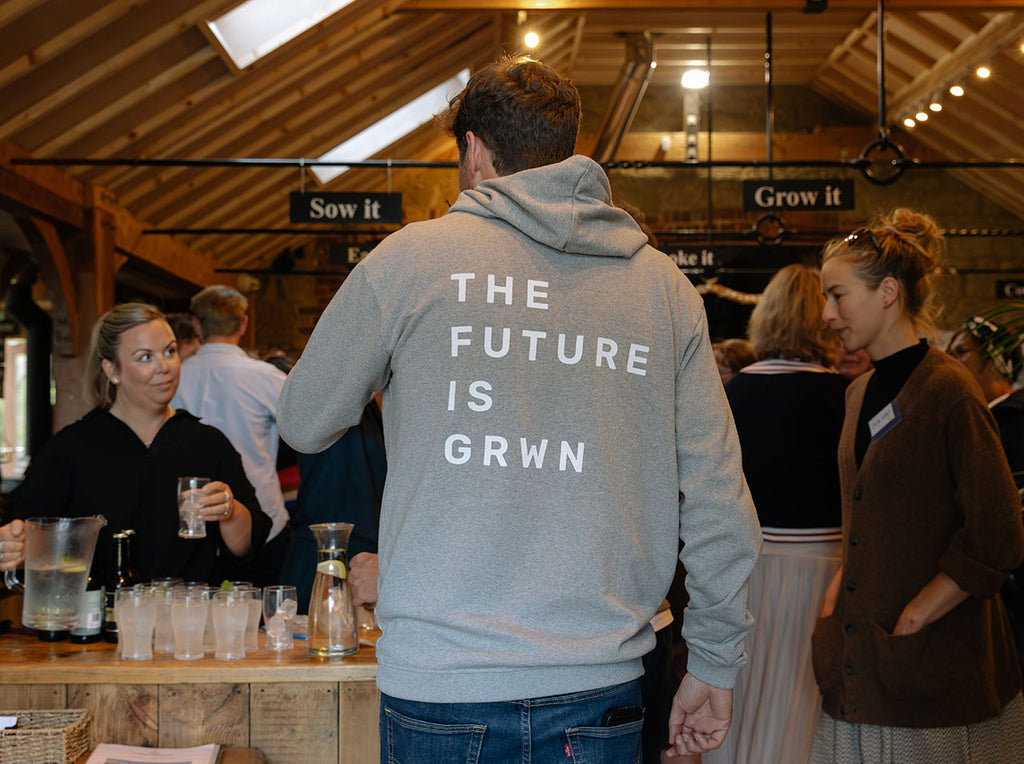
Common Ground
Collaborative Event: Restorative Land Use
Gathering people together on the farm to learn from each other and share ideas is always more helpful than we think. There are always little surprises, accidental moments or exchanges that unfold and help us see things differently. For all the vastness of digital knowledge and experience available within a few clicks, it’s great to be reminded of how powerful human contact and connection can be.
Last month we collaborated with two groups to host an event that asked questions over the Isle of Wight’s journey toward net zero and how this relates to farming the use of land locally. The link between carbon emissions, biodiversity and food production is a big topic but the themes raised by the 80 attendees unearthed some very thought-provoking discussion.
The key consideration was, not surprisingly, impact. Whilst the focus was on the effect of carbon emissions, the urgent need to address the linear, extractive processes that damage natural capital as well as communities gave the event a circular and inclusive feel.
By co-hosting with Together For Mission Zero, a group championing the Island’s journey toward net zero, we combined agricultural practitioners with ecologists, researchers, economists and other eclectic audience members.
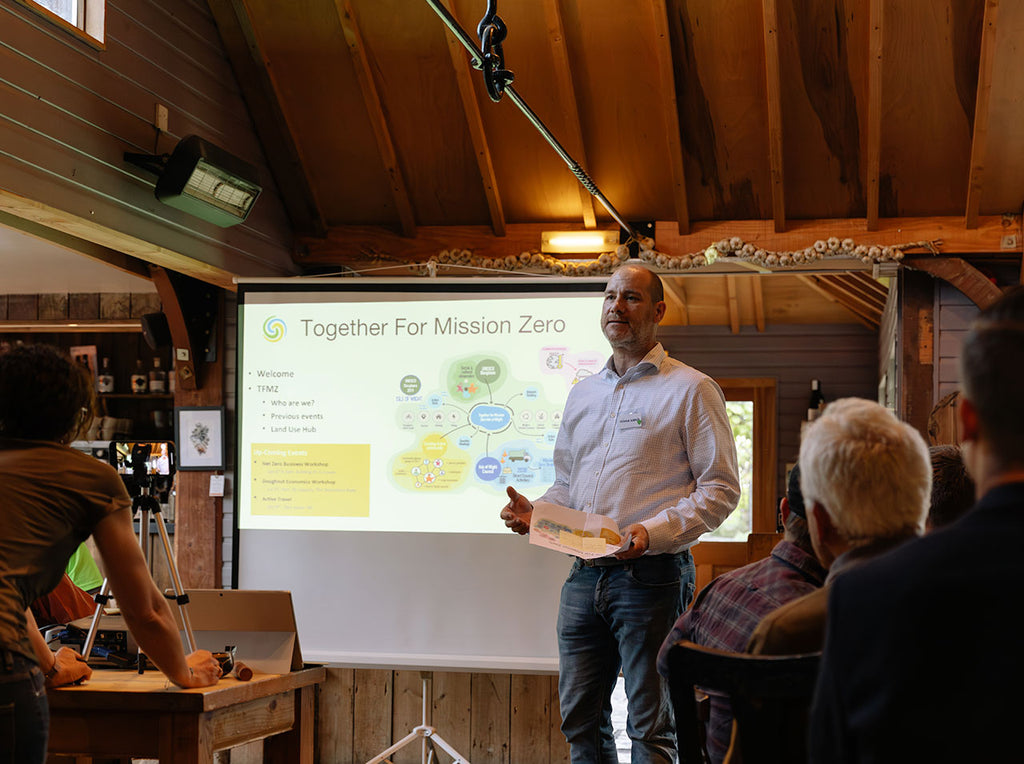
Examples of varying farm practices and approaches to land use highlighted the nuance of the issue in the context of a more nature-friendly way of producing food.
The production of food is essential at global level, preferrable at local level but certainly neither can continue sustainably if the impact of food production causes the total erosion of our environment and ecosystem. The focus of food helped to frame the question of the ability of land to be both productive as well as restorative. Debate abounds on this subject and with a few of those careful clicks mentioned earlier, one can easily engulf in the over-simplified extremes of rewilded savannahs among which humans are fed by magically synthesised proteins in steel vats. What was proposed on the night was how certain methods of food production and land use can not only co-exist with nature but also how they can help actively repair the impact of emissions, biodiversity loss and support communities. Animal and human health were also put centres stage.
To understand the power that our use of land has on our ability to turn problems in to solutions, the panellists focussed on a few headline topics. These were: soil, ruminant livestock, trees, food design, health, and cost.
It makes sense to begin with soil because this is where life begins, ends, and then begins again. This circular nourishment of the living by the dying is how nature operates and by disturbing this, we threaten soil’s ability to function. The physical, chemical, and biological health of soil are the three main attributes that conscientious farmers attune to. When in balance, restorative productivity abounds. But with repeated insensitive interference of these conditions, the water holding capacity, carbon sequestration, and ability for soil to produce nutrient-dense food diminishes rapidly.

We had two local farmers offer descriptions of why they see soil health to be so critical to their own business, to ecology and their community. The first as Jack Hodgson of Cheverton Farm. Jack, his father Andrew and their team look after approximately 2,000 acres of arable and produce beef, pork, lamb and have their own maturation and butchery facility.
Speaking alongside Jack was Will Steward from Living Larder, a 30-acre organic farm growing a diversity of fresh vegetables for local, direct delivery as well as supplying the Island’s best restaurants.
On paper, these two operations are wildly different, but in practise, not only do they employ about the same number of people but their attitude to soil is similar. Without good soil, neither of them has a good business and so whilst the techniques they employ may differ in terms of tillage, inputs, machinery and diversity of cropping, the outcomes of these techniques are very carefully considered.
Jack highlighted how swiftly large-scale agriculture is changing, citing a rise in fertiliser cost and the advances in technology as significant stimulus to a shift in more targeted use of inputs. Jack’s passion for the emerging sophistication of variable measurement to assess crop and deliver targeted response was very well expressed.
Will shared an anecdote about aphids that looked destined to destroy his crop of tenderstem. On principal, Will didn’t use a pesticide, even though a product was Soil Association approved and within a week, nature solved the problem when the hoverfly larvae hatched and took care of the aphids.
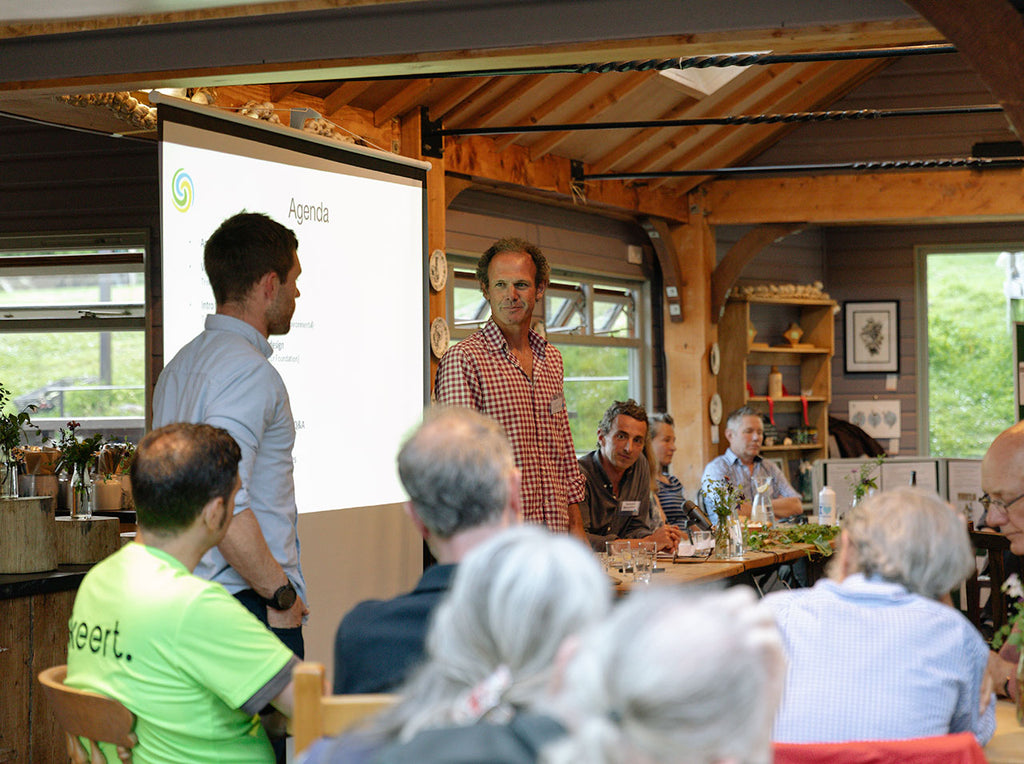
To expand on the varying management practices of livestock, we were very luck to have large animal vet Hannah Kenway from Green, Roberts & Butler talk alongside a young livestock farmer, Hollie Fallick. With industrialised beef production documented as a climate problem, they touched on how can cows (and other ruminants) be part of the solution. Their disclaimer chimed with that of the entire evening; these huge questions might take twenty years to answer, not two hours!
Hollie, once a vegan and climate activist, is new to farming and a very focussed, informed, and spirited advocate of the links between animal welfare and human health. She has native breed cattle, pigs and laying hens in a pasture system at Nunwell Home Farm that is squarely aimed at actively increasing biodiversity. Her message to the room was about the power of pasture; how adaptive grazing gives plants the chance to rest and regrow with strong and deep roots that nourish the soil and cycle nutrients infinitely more effectively than practices that can lead to overgrazing. She cited trials and studies that are proving the increased carbon sequestration of these methods as well as the nutritional advantage and animal welfare benefits.
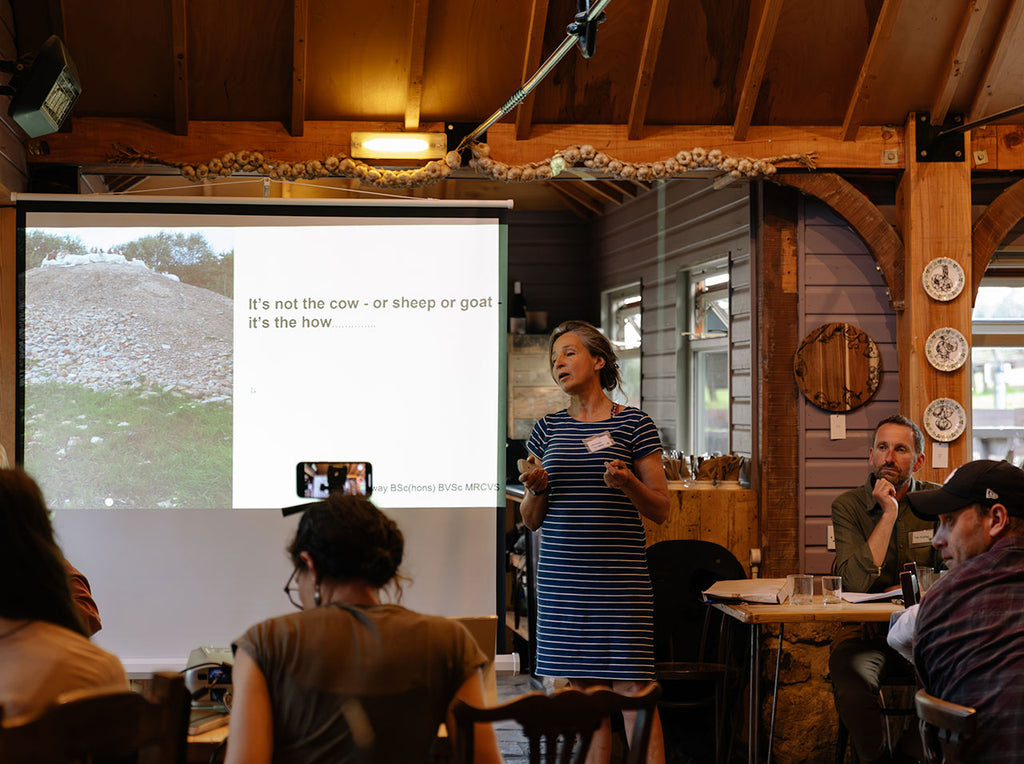
Hannah is a very experienced vet; by visiting multiple farms daily she accumulates a very clear view of the practices that work. In an inspiring display of efficiency, Hannah focussed on this very word to explain the crux of successful livestock farming. She highlighted local farms that, paradoxically, she visits the least; through careful management, their need for intervention is low. Hannah’s description of the techniques that deliver a good return of human food from good pasture and animal management with low mortality, disease and treatments was not only a clear description of efficiency but also a great case study of the benefits of strong animal welfare.
The topic that didn’t initially get the airtime it deserved was the role of trees on farms. Tom Murphy, an arborist with decades of holistic woodland management under his belt was luckily on hand in the break-out sessions to expand on how powerful the integration of trees into agriculture can be. Tom and I completed an Agroforestry Design Masterclass together at the fantastic FarmEd where the potential to increase crop production despite allocating or ‘sacrificing’ strips of arable land to trees was evidenced. The livestock benefits of shade, shelter and browse offered by silvopastural systems was also detailed on this course. Tom combined his lifelong knowledge of woodland ecology to succinctly highlight how some of these ecosystem benefits can be brought into fields, delivering what some climate researchers and NGOs are calling one of the most significant strategies in tackling carbon and biodiversity targets.
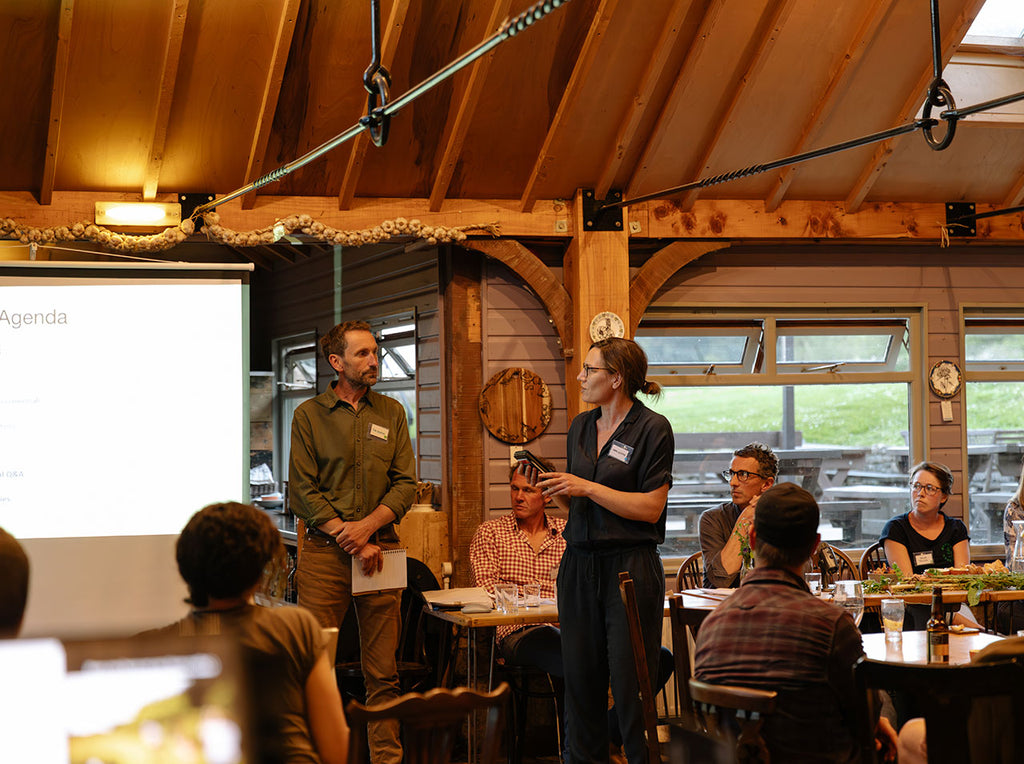
The remaining topics of food design, health, and cost cannot be skimmed over as they form the methods and motivations for the much-needed change to the entire food system. Henrietta Goddard gave a detailed presentation to show that innovation within food design at product level has the power to shift from the three main commodity crops of rice, wheat and maize that produce almost half the world’s calories to a less wasteful, more diverse, regenerative system for the potential benefit of climate and community. We can all use food design to play our part, and that includes large food businesses whose influence over agricultural landscapes mean they need to be part of the solution too. The Ellen MacArthur Foundation works with a global network of organisations big and small and has launched the Big Food Redesign Challenge which will take food companies on a journey to understand the power of food design, and how evolving their ingredient selection and sourcing decisions can contribute to a more resilient food system, transform our landscapes and support the ecosystems within them.
Human, animal, and environmental health might all benefit from this broadening of diversity and this in turn could expose the true cost of a linear and extractive system. Could good food, that currently costs more than bad food, be re-framed so that the positive impact of good food on people, planet and animals reflects the positive impact on emissions, nature, healthcare and animal welfare?
Drawing any firm conclusions on the opportunity of encouraging a more restorative and productive use of land on the Isle of Wight, let alone further afield, proved to be too ambitious a target for a two-hour event. But it was agreed that balancing the needs of productivity with carbon emissions and biodiversity requires a holistic, sensitive, and collaborative approach. The great news is that there are, and have been for many decades, local farmers and land practitioners doing exactly this. Through a combination of increased knowledge sharing and appetite for nature-friendly farming techniques and stronger connections with consumers and the community, the pace and reach of positive change looks set to grow.
Both Becca and James who work together at Warren Farm also have advisory and advocacy roles on top of their daily farming duties summarised this local positivity perfectly and were able to give context on a national and even international scale.
The evening couldn’t hope to give definitive answers on such a nuanced issue, but it did stimulate more questions and connections. It felt like the start of something helpful. It felt like we came together to explore ways for us all to improve our relationship with our environment. There is lots of this sort of connection and creativity happening on the Isle of Wight, perhaps that’s partly why UNESCO recognises the Island as one of only seven UK Biosphere Reserves!?

With many thanks to experts and representatives from the below organisations who all attended and hosted the break-out discussions.
To view the full presentation please click here.
Thank you for reading, do please sign up to our newsletter.
